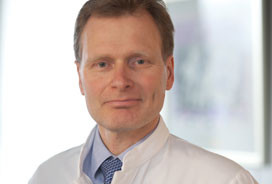Care begins with assessing the concerns and needs of each individual, with communication of information that increases understanding of the disease process, allays anxiety, and enhances coping skills.
Treatment plans are individualized and are designed to maximize safety, address the most troubling symptoms, anticipate and minimize future problems, and reflect up-to-date knowledge.
Hyperlipidaemia and metabolic syndrome
World Health Organization - A World Health Organization (WHO) diabetes group proposed a set of criteria for the metabolic syndrome in 1998 with the recognition that these criteria could be modified as more was learned about the syndrome.
Insulin resistance, impaired glucose tolerance, or diabetes were included in this definition, which follows:
- Hyperinsulinemia or a fasting plasma glucose (FPG) 110 mg/dL (6.1 mmol/L) or a plasma glucose two hours after an oral glucose tolerance test 200 mg/dL (11.1 mmol/L).
- PLUS at least two of the following: Abdominal obesity, defined as a waist-to-hip ratio >0.90, a body mass index (BMI) 30 kg/m2, or a waist girth 94 cm (37 in) (see "Clinical evaluation of the overweight adult", section on Determination of degree and type of overweight) Dyslipidemia, defined as serum triglyceride 150 mg/dL (1.7 mmol/L) or high-density lipoprotein HDL cholesterol <35 mg/dL (0.9 mmol/L) Blood pressure 140/90 mmHg or the administration of antihypertensive drugs.
Investigation of an under- or oversupply of vitamins
A common phenomenon, e.g. during the menopause
Hirsutisms
Hirsutism, defined as excessive male-pattern hair growth, affects between 5 and 10 per cent of women of reproductive age. It may be the initial, and possibly only, sign of an underlying androgen disorder, the cutaneous manifestations of which may also include acne and male-pattern balding (androgenic alopecia). Depending upon the body site, hormonal regulation plays an important role in the hair growth cycle. Race and ethnicity are important determinants of body hair distribution in women. Polycystic ovary syndrome is the most common cause of hirsutism.
The diagnosis of idiopathic hirsutism is given to women with hirsutism with normal serum androgen concentrations, no menstrual irregularity, and no identifiable cause of their hirsutism. Other causes include congenital adrenal hyperplasia, ovarian and adrenal androgen-secreting tumors, medications, and other rare disorders.
Excess or lack of sexual hormones
Women: After excluding pregnancy, the most common causes of secondary amenorrhea are: Ovarian disease - 40 percent Hypothalamic dysfunction - 35 percent Pituitary disease - 19 percent Uterine disease - 5 percent
Men: When testosterone deficiency first occurs after puberty has been completed, symptoms may include a decrease in energy and libido, erektile dysfunktion, that occur within days to weeks. However, sexual hair, muscle mass, and bone mineral density do not fall to a readily detectable degree for several years. Men may also present with infertility. Some may present with hiperlipedemia.
Osteoporosis
Reduced bone mass is the most common clinical skeletal disorder. An age-related decline in bone mass begins around age 35 years and accelerates in women after menopause. Early diagnosis and quantification of bone loss and fracture risk have become more important because of the availability of therapies that can slow or even reverse the progression of osteoporosis.
Disorders of the sex hormone metabolism
which can cause erectile dysfunction, cycle disorders, hirsutism or hair loss and poor performance as well as adynamia
